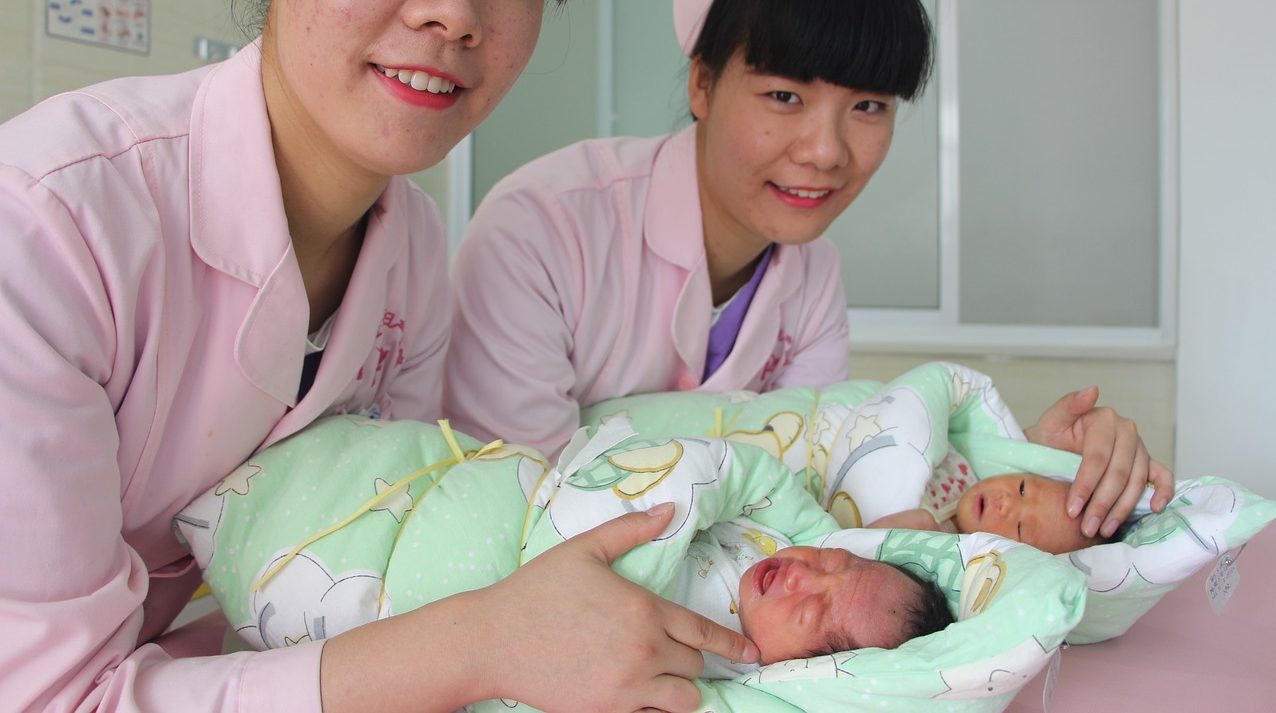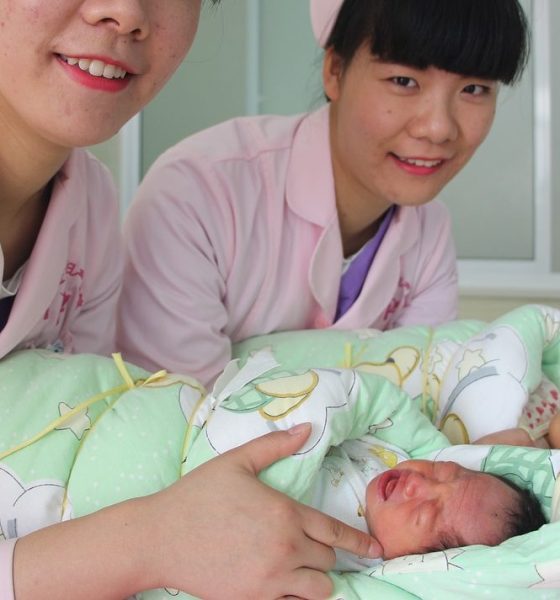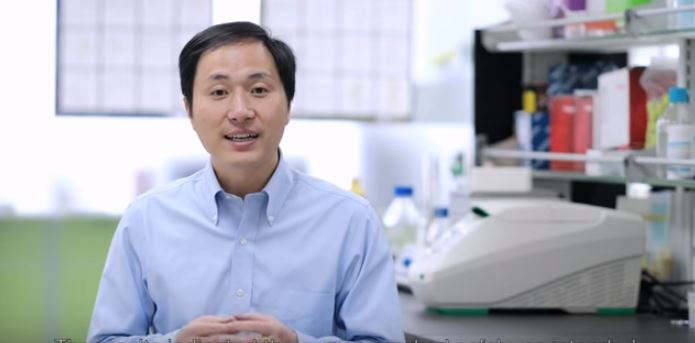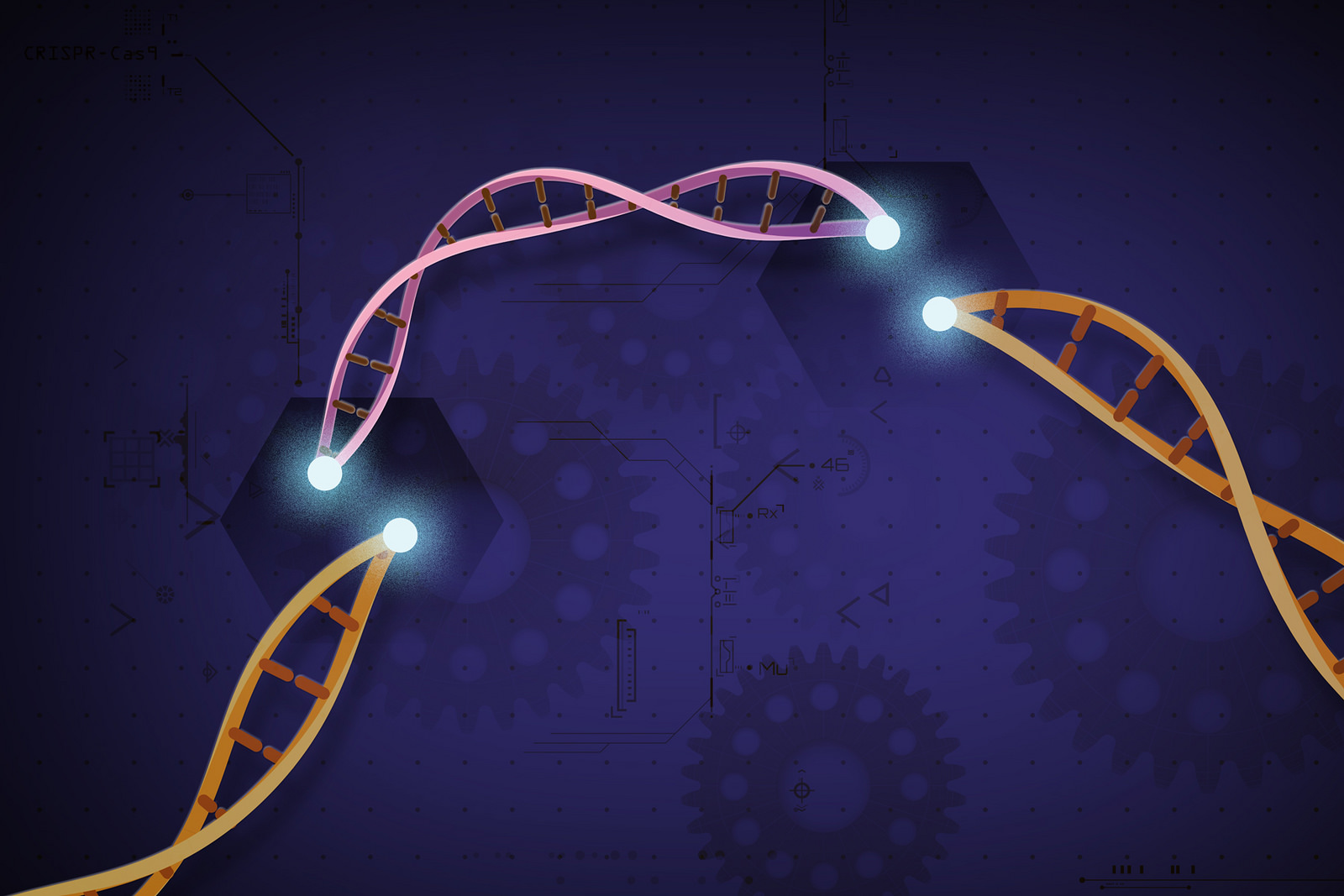

Lifestyle
Chinese scientist edits twin human baby genes to prevent HIV infection
A Chinese scientist and professor named Dr. He Jiankui claimed this week that he edited the genes of recently born twin girls while they were embryos. Using a technique called CRISPR-Cas9, the gene responsible for allowing HIV to infect the body was altered to mimic a natural genetic variation in some humans that confers strong resistance to the virus. The father of the babies in the study is HIV positive, a fact which motivated the study and the family’s willingness to take part.
The study’s twins, referred to as “Lulu and Nana”, are said to be in excellent health, and the full details of the corresponding study promised to be provided for public review in the near future. Dr. He, who studied at Rice University in Texas and Stanford University in California, is expected to speak at the Second International Summit on Human Genome Editing in Hong Kong on Wednesday where further evidence may be presented. Thus far, none has been made available, although Dr. He’s previous work is well known to those in the field, giving certain merit to his claims.
The response to Dr. He’s announcement has, thus far, been overwhelmingly negative along with the validity of the claims being questioned. The ethics of gene editing in babies is decidedly set against the practice in the global scientific community, and a significant number of organizations have issued public statements strongly condemning the professor’s work. The Chinese government has also since ordered an inquiry. While an explicit ban on gene editing on embryos intended for reproduction does not exist in the country, strict ethical guidelines recommend strongly against the practice.

Additionally, Dr. He adamantly denies that his research and work in gene editing serves the purpose of the infamous “designer baby” concept. “For forty years, regulations and morals have developed together with IVF [and gene editing is another] advancement…only meant to help a small number of families,” he stated in his video published November 25th. In an interview with the AP, he defined his goal as bestowing traits that resist future infections from diseases like HIV, the AIDS virus.
The process involved in editing the twin girls’ DNA, as described, began as a regular In Vitro Fertilization (IVF) process wherein the mother’s eggs were fertilized by the father’s sperm to create an embryo in a laboratory environment. At that stage, a CRISPR/Cas9 protein with gene editing instructions was introduced to amend the embryo DNA, and those embryos were subsequently implanted in the mother. Dr. He has claimed that the resulting genomes were assessed at the embryonic stage, during pregnancy, and after birth to confirm that the intended gene alone was changed.

The hospital claimed to have approved Dr. He’s research, Shenzhen Harmonicare Women’s and Children’s Hospital, has denied having a relationship with Dr. He or any involvement in the experiment. They have also lodged a police report in this regard. Additionally, Southern University of Science and Technology, the university where Dr. He is employed, stated that the professor has been on unpaid leave since February 1, 2018, thus the research involved with the twins was not affiliated with the school.
One of the primary concerns with editing genomes at the embryo level is the long-term impact on both the humans in question and their offspring who will inherit the modified genes. The edited DNA would eventually enter the general population as it passed on through generations. In this study, CCR5, a gene used to make a protein HIV needs to enter cells, was disabled in the twins’ DNA, an edit which effectively shuts off the “gateway” through which the virus infects the body. Although no unintended consequences have yet been observed in this example, scientists overall point to years of study still needed before clinical treatment can ethically be conducted.
One of the ethical guidelines involved in gene editing is restricting its use to only addressing medical needs which cannot be effectively treated through other means. In denouncing the driver of Dr. He’s study, specifically in addressing HIV via gene editing, safe-sex was recommended as a preventative along with current medical treatments in the case of infection by the director of the Oxford Uehiro Centre for Practical Ethics at the University of Oxford. Opposing the opinion of the medical community, however, a recent study by the Sun Yat-Sen University in China found that around 60% of Chinese people have a favorable view of gene editing for disease therapy. Professor He has also pointed to the discrimination faced by Chinese people with HIV as further motivation for his controversial work.
Watch the below video He Jianjui published announcing the gene surgery:

Lifestyle
Tesla Model S Plaid battles China’s 1500 hp monster Nurburgring monster, with surprising results
There is just something about Tesla’s tuning and refinement that makes raw specs seem not as game-changing.

The Tesla Model S Plaid has been around for some time. Today, it is no longer the world’s quickest four-door electric sedan, nor is it the most powerful. As per a recent video from motoring YouTube channel Carwow, however, it seems like the Model S Plaid is still more than a match for some of its newer and more powerful rivals.
The monster from China
The Xiaomi SU7 Ultra is nothing short of a monster. Just like the Model S Plaid, it features three motors. It also has 1,548 hp and 1,770 Nm of torque. It’s All Wheel Drive and weighs a hefty 2,360 kg. The vehicle, which costs just about the equivalent of £55,000, has been recorded setting an insane 7:04.957 at the Nurburgring, surpassing the previous record held by the Porsche Taycan Turbo GT.
For all intents and purposes, the Model S Plaid looked outgunned in Carwow’s test. The Model S Plaid is no slouch with its three motors that produce 1,020 hp and 1,420 Nm of torque. It’s also a bit lighter at 2,190 kg despite its larger size. However, as the Carwow host pointed out, the Model S Plaid holds a 7:25.231 record in the Nurburgring. Compared to the Xiaomi SU7 Ultra’s record, the Model S Plaid’s lap time is notably slower.
Real-world tests
As could be seen in Carwow’s drag races, however, Tesla’s tech wizardry with the Model S Plaid is still hard to beat. The two vehicles competed in nine races, and the older Model S Plaid actually beat its newer, more powerful counterpart from China several times. At one point in the race, the Xiaomi SU7 Ultra hit its power limit due to its battery’s temperature, but the Model S Plaid was still going strong.
The Model S Plaid was first teased five years ago, in September 2020 during Tesla’s Battery Day. Since then, cars like the Lucid Air Sapphire and the Xiaomi SU7 Ultra have been released, surpassing its specs. But just like the Model Y ended up being the better all-rounder compared to the BYD Sealion 7 and the MG IM6, there is just something about Tesla’s tuning and refinement that makes raw specs seem not as game-changing.
Check out Carwow’s Model S Plaid vs Xiaomi SU7 drag race video below.
Lifestyle
500-mile test proves why Tesla Model Y still humiliates rivals in Europe
On paper, the BYD Sealion 7 and MG IM6 promised standout capabilities against the Model Y.

BYD is seeing a lot of momentum in Europe, so much so that mainstream media has taken every opportunity to argue that the Chinese automaker has beaten Tesla in the region. But while BYD sales this year in Europe are rising and Tesla’s registrations remain challenged, the raw capabilities of vehicles like the Model Y are difficult to deny.
This was highlighted in a 500-mile challenge by What Car? magazine, which showed that the new Tesla Model Y is more efficient, cheaper to run, and more reliable than rivals like the BYD Sealion 7, and even the nearly 400 KW-charging MG IM6.
Range and charging promises
On paper, the BYD Sealion 7 and MG IM6 promised standout capabilities against the Model Y. The Sealion 7 had more estimated range and the IM6 promised significantly faster charging. When faced with real-world conditions, however, it was still the Model Y that proved superior.
During the 500-mile test, the BYD nearly failed to reach a charging stop, arriving with less range than its display projected, as noted in a CarUp report. MG fared better, but its charging speeds never reached its promised nearly-400 kW charging speed. Tesla’s Model Y, by comparison, managed energy calculations precisely and arrived at each stop without issue.
Tesla leads in areas that matter
Charging times from 25% to 80% showed that the MG was the fastest at 17 minutes, while Tesla and BYD were close at 28 and 29 minutes, respectively. Overall efficiency and cost told a different story, however. The Model Y consumed 19.4 kWh per 100 km, compared to 22.2 for MG and 23.9 for BYD. Over the full trip, Tesla’s charging costs totaled just £82 thanks to its supercharger network, far below BYD’s £130 and MG’s £119.
What Car? Magazine’s testers concluded that despite BYD’s rapid sales growth and the MG IM6’s seriously impressive charging speeds, Tesla remains the more compelling real-world choice. The Model Y just offers stability, efficiency, and a proven charging infrastructure through its Supercharging network. And as per the magazine’s hosts, the Model Y is even the cheapest car to own among the three that were tested.
Watch What Car? Magazine’s 500-mile test in the video below.
Lifestyle
Tesla Cybertruck slapped with world’s least intimidating ticket, and it’s pure cringe
One cannot help but cringe and feel second-hand embarrassment at the idea of a person just driving around with a stack of these babies.

A Cybertruck parked at Stanford Shopping Center in California was recently hit with what might be the most try-hard piece of paper ever slipped under a wiper blade: a “fake citation” accusing the driver of supporting a “fascist car.”
The note, shared on X by Tesla staff program manager Ryan Torres, quickly made the rounds on X, where it quickly gained attention as an example of how not to protest.
The world’s least intimidating ticket
According to the citation, the supposed “violation” was “driving a fascist car.” The remedial action? Take the bus, call an Uber, or ride a bike. The note also dubbed Elon Musk a “chainsaw-wielding Nazi billionaire.” Now, protests against Tesla and Elon Musk have become commonplace this year, but one cannot help but cringe and feel second-hand embarrassment at the idea of a person just driving around with a stack of fake anti-Tesla/Musk citations.
Torres pointed out the irony himself in his post on X. Tesla currently employs over 140,000 Americans, and SpaceX has put the U.S. firmly back at the top of space technology. As Torres put it, maybe the person behind the world’s least intimidating ticket should “read a book on innovation before vandalizing” other people’s property.
Peak performative clownery
Not to mention that the fake ticket’s logic collapses under its own weight. EVs like the Cybertruck are literally designed to reduce emissions, not “destroy the economy.” If anything, Tesla has bolstered the United States’ economy by fueling jobs in engineering, manufacturing, and clean energy. It’s not the first time a Tesla has been the target of vandalism or politically charged notes, but this one stands out for sheer cringe value.
Torres summed it up neatly: “Peak clownery.” On that point, at least, the citation earns full marks. In a way, though, perhaps cringe fake tickets are not as bad as the literal firebombs that were being thrown at Tesla stores and cars earlier this year because some critics were gleefully misinformed about Elon Musk.








